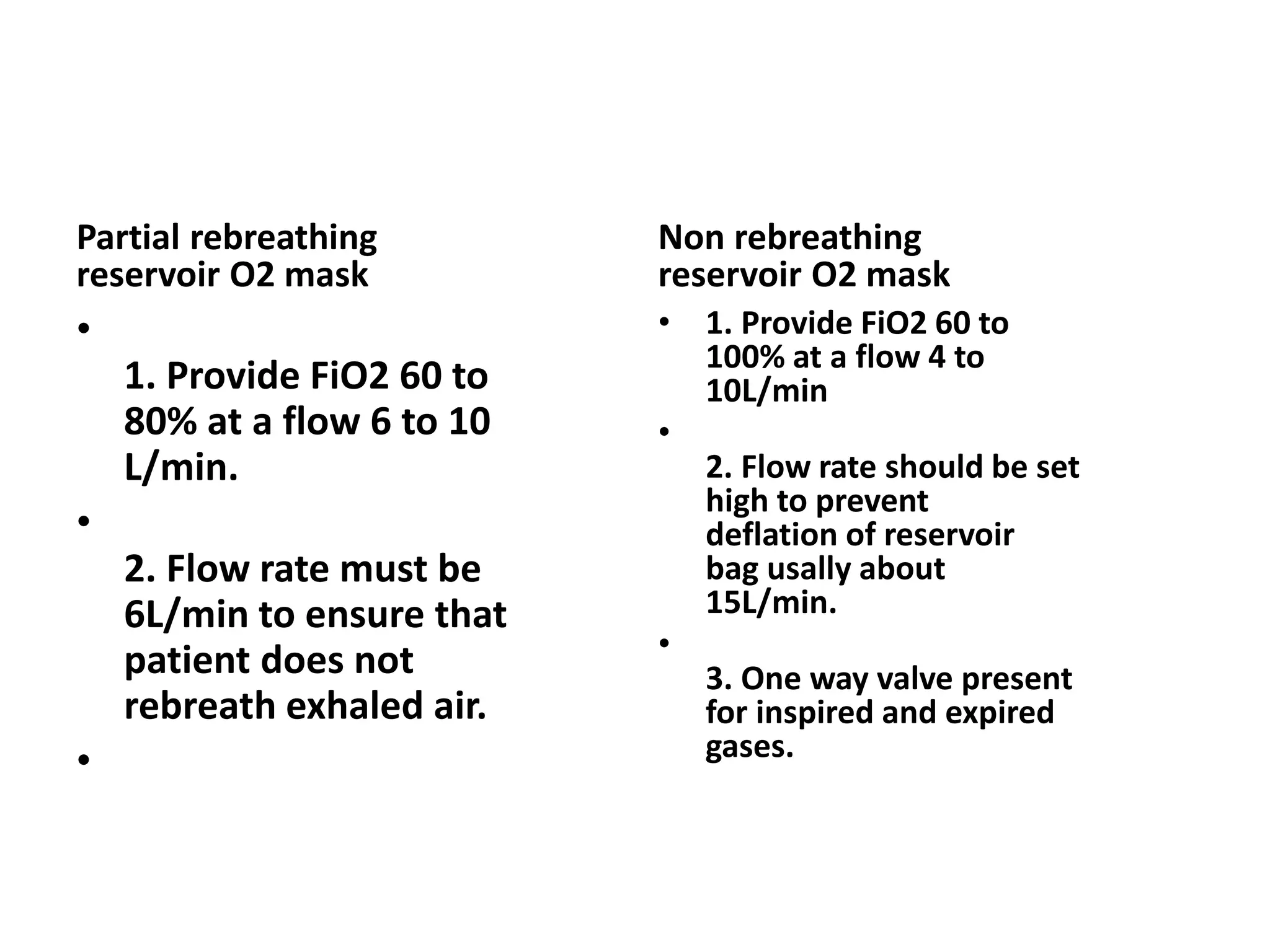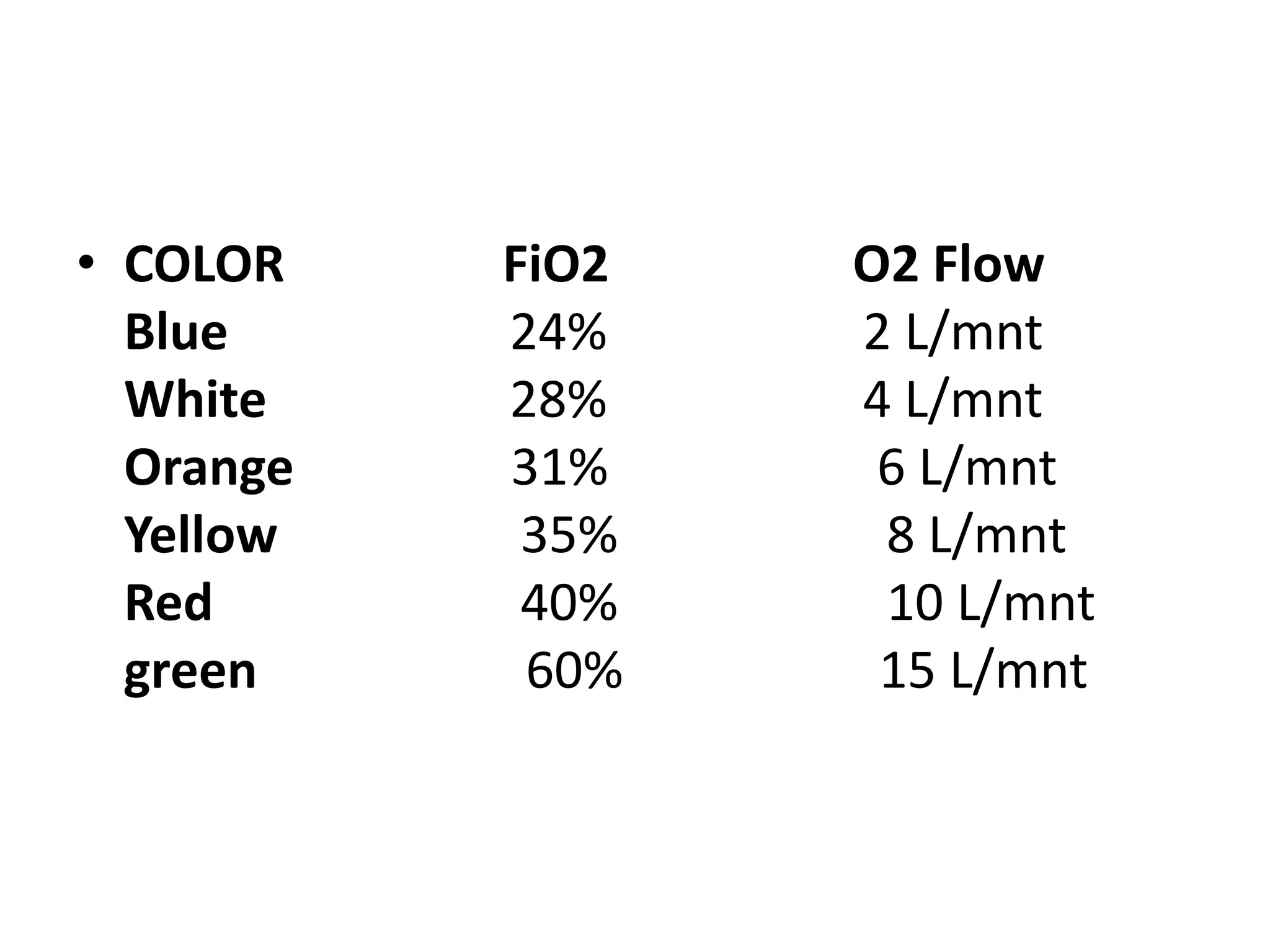Oxygen administration is used to treat conditions causing low oxygen levels in the blood and tissues. It works by delivering oxygen at higher percentages than is found in regular air. The normal oxygen level in arterial blood is 80-100 mm Hg; levels below 60 mm Hg can cause physiological effects. Oxygen is administered through various devices like nasal cannulas, masks, tents and venturi masks to precisely deliver the prescribed oxygen concentration. Close monitoring is needed when providing oxygen therapy to ensure safety and prevent drying of tissues or other potential side effects.























































